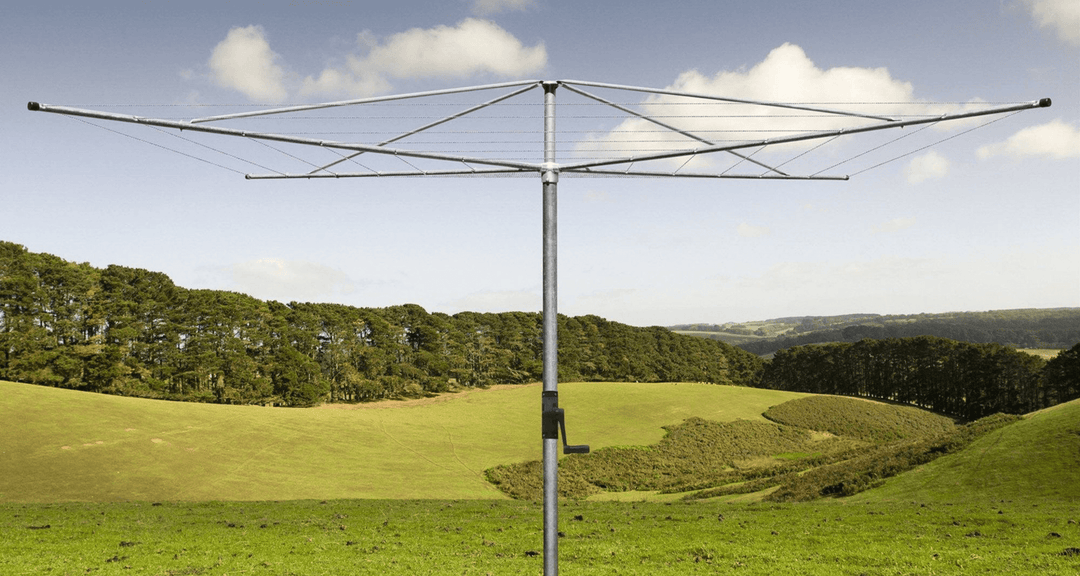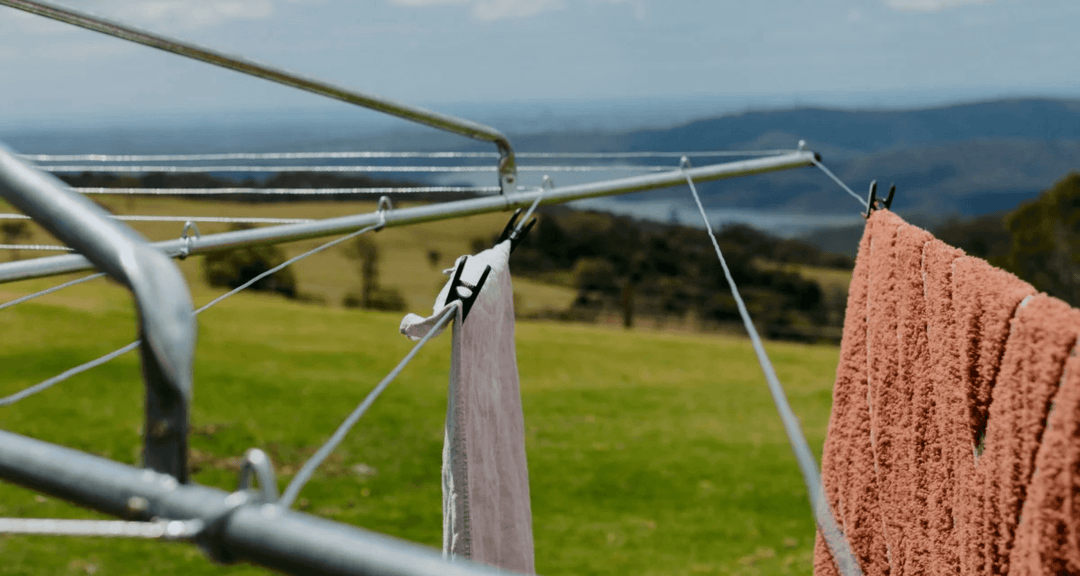How to Use the Proper Washing Machine Mode or Cycle
Confused by the endless cycle options on your washing machine?
This no-frills guide, “how to use the proper washing machine mode or cycle” points you exactly to the right setting, helping you navigate the modes—from heavy-duty to hand-wash cycles—specific to your wash needs.
Learn how to use your washing machine effectively, ensuring your clothes come out pristine while conserving energy and water.
Short Summary
-
Pick the right cycle for what you’re washing (like delicate cycle for sensitive fabrics, or heavy cycle for things like towels) to make your clothes last longer and save energy.
-
Load your washer correctly – don’t overload or underload to prevent damage and ensure clothes get clean. Sort by colour and fabric, and always check for stains to treat before washing.
-
Choose the right detergent, especially if you have sensitive skin, and use the correct amount. Remember to run cleaning cycles to prevent buildup in your machine.
Understanding Washing Machine Cycles and Settings
Have you ever looked at the panel on your washing machine and wondered what all those cycles and settings mean?
You’re not alone.
Many people simply opt for the ‘normal’ or ‘default’ setting, not realising they could optimise their laundry routine by choosing the appropriate cycle and setting.
This is essential for efficient laundry management and can help you avoid potential damage to your clothes, save energy, and be more eco-friendly.

Modern washing machines are designed with a variety of cycles tailored for different items - from heavy blankets to delicate pieces.
These washing machine settings can be fine-tuned for temperature, spin speed, and soil level, which can significantly improve the effectiveness of your washing process.
But beware, incorrect cycle or setting choices can lead to increased wear and tear on clothes, inefficient cleaning, and unnecessary energy usage.
Types of Washing Machine Cycles
First things first, let’s unravel the mystery of the different washing machine cycles.
Each cycle is designed to handle various types of laundry loads effectively, ensuring proper cleaning without damaging fabrics.
The trick is to match the cycle with the type of clothes you are washing.

For instance, the different cycles available on your washing machine include:
-
Delicate cycle: perfect for your sensitive fabrics, preventing shrinking and material breakdown
-
Cotton cycle: Permanent Press/Synthetics cycle for fabrics requiring normal agitation but a slower spin cycle to avoid wrinkling
-
Bedding/Bulky/Heavy cycle: designed for heavily soiled laundry such as beddings or towels
-
Machine wash cycle: a general cycle for everyday laundry needs, including various rinse cycles to ensure thorough cleaning
And the list goes on.
Choosing the appropriate washing cycle for washing clothes is crucial for the care and longevity of clothing, as well as energy and water efficiency.
Settings for Different Fabrics
Now that we’ve covered the various cycles, let’s move onto the settings for different fabrics.
You’ve probably noticed symbols on your clothes tags.
These are not hieroglyphics but care instructions to guide you on how to launder the garment.
Understanding these symbols and the appropriate settings for different fabrics is key to ensuring proper care and cleaning.

Take the Wool Cycle, for instance.
It’s an absolute lifesaver for woolen garments, protecting wool fibres from shrinkage and distortion during laundry.
Pair this with a neutral detergent, and your woolen garments will thank you for it.
Delicate items, such as delicate fabrics, should be laundered using zipped mesh bags to provide gentle care and prevent damage.
For heavily soiled items, steam cleaning is an effective method for laundering, ensuring gentle handling and thorough cleaning.
Temperature Guidelines
Just as you wouldn’t cook all your food at the same temperature, your clothes too need specific temperatures for washing.
The water temperature greatly impacts how well your laundry turns out.
It’s especially important for getting rid of stains and disinfecting your clothes effectively.
Hot water, for example, is great for disinfection and superior wash quality, especially for heavily soiled garments.

But be cautious of the drawbacks such as longer cycle times, increased electricity and water consumption, and the risk of damage to heat-sensitive fabrics.
On the other hand, a cold wash can be a more energy-efficient alternative.
On the other hand, washing light or regularly soiled clothes at cooler temperatures can help avoid shrinking, reduces wear and tear on garments, and is more energy efficient.
Hence, it’s important to consider the fabric type when selecting water temperature.
Maximising Laundry Efficiency with Proper Loading Techniques
Moving on from cycles and settings, let’s explore how to maximise laundry efficiency by following proper loading techniques.
You might think loading a washing machine is as simple as throwing in your clothes, adding detergent, and pressing start.
While that’s not entirely wrong, there’s a bit more to it if you want to ensure optimal cleaning and efficiency.

An overloaded washing machine drum can hinder water circulation, hamper cleaning, and strain the motor.
On the other hand, underloading can result in an unbalanced load, causing your machine to shake and move, possibly leading to damage.
So, how do we find the balance?
Let’s delve deeper.
Sorting Clothes by Colour and Fabric Type
Step one in your laundry process should be sorting your clothes.
This doesn’t just mean separating your whites from your colours, but also involves sorting by fabric type and weight.
Doing so is essential to prevent colour transfer and damage to fabrics.

To avoid dye bleeding between items, garments should be divided by colour shades with darks like greys, blacks, and reds in one load, and lights like pinks and light blues in another.
Also, make sure to wash delicates, cottons, and denims under appropriate water temperatures and conditions to prevent lighter garments from being damaged by heavier items during the wash cycle.
A little organisation can go a long way in ensuring an efficient and error-free laundry process.
Balancing Load Sizes
Next up is balancing your load sizes for both washing machine and tumble dryer.
As we mentioned earlier, overfilling a washing machine can lead to improper cleaning of clothes, while underloading can cause your machine to become unbalanced.
An unbalanced or overly full drum can trap clothes, leading to tears and excessive wear.

When loading a front load washer, follow these steps to ensure a balanced load:
-
Mix large and small items to distribute the weight evenly.
-
Avoid overloading the drum.
-
If you feel like your clothes are not washing properly, redistribute clothes in the drum to address issues of uneven wear and tear caused by an unbalanced load.
Pre-treating Stains
Last but not least, let’s talk about pre-treating stains.
We’ve all been there - a drop of coffee on your white shirt or a splash of sauce on your favourite dress.
Instead of fretting over it, act quickly and treat the stain as soon as possible.

If you don’t have immediate access to stain removal products, running the affected fabric under cold water can minimise a stain’s impact.
Rinse stains from the inside of the fabric outward to avoid spreading the stain and driving it deeper into the material.
And remember, gently blot the stain instead of rubbing the material together to prevent further embedding the stain into the fabric.
Detergent Selection and Usage
Now that we’ve covered the washing machine and loading techniques let’s talk about the detergent.
Choosing the right detergent and using it correctly is as important as selecting the right wash cycle or loading your machine properly.

When it comes to adding detergent, the process differs between front and top loader washing machines.
For front loaders, detergent should be added to the drawer located at the top of the machine.
For top loaders without a detergent drawer, detergent should be added directly to the drum of the washing machine before the clothes.
Types of Laundry Detergents
There’s a wide variety of laundry detergents, including liquid detergents, available in the market today, and choosing the right one can sometimes feel like a daunting task.
It’s important to choose a detergent that matches your household needs, such as the level of soiling and any skin sensitivities.

Also, be aware of the type of machine you have.
Using the wrong type of detergent, such as top loader detergent in a front loader, can lead to excessive foaming and may require you to stop the cycle to drain the machine.
The cost per wash can also vary among detergents, with some premium brands costing over a dollar per wash while others can be as low as 11 cents per wash.
Measuring and Adding Detergent
Now let’s focus on how to measure and add detergent correctly.
This might seem like a no-brainer, but you’d be surprised how many people either use too much or too little detergent.
For small loads of laundry, a reduced amount of detergent may be sufficient, whereas for larger or dirtier loads, you might need to increase the amount accordingly.

In areas with hard water, more detergent may be required to counteract the minerals that reduce the efficacy of cleaning agents.
Remember to add the measured detergent to the washing machine’s detergent compartment or directly into the drum prior to loading clothes, depending on your washer type.
Detergent Tips for Sensitive Skin
If you or someone in your household has sensitive skin, you need to be extra careful when choosing a detergent.
Opt for detergents labeled ‘hypoallergenic’ which are typically free from:
-
dyes
-
perfumes
-
parabens
-
other common irritants

Hypoallergenic laundry detergents are often reviewed by dermatologists or verified by third-party sources like SkinSAFE to ensure they are less likely to cause skin irritation.
For individuals with sensitive skin, detergents that have earned high SkinSAFE scores, such as 100, are recommended because they are gentle and free of the most common skin allergens.
It’s also important to distinguish between unscented and fragrance-free detergents, as unscented detergents may still contain masking fragrances that can irritate sensitive skin.
Special Features and Functions of Modern Washing Machines
Modern washing machines are not just about basic washing and spinning.
They come with a plethora of advanced features designed to enhance laundry results and make the task easier for you.
Some of these features include:
-
Self-cleaning
-
Smart connectivity
-
Options focused on environmental sustainability
-
Technology to reduce operational noise

Among these features, one that stands out is the steam function.
Some washing machines offer steam functions to improve the washing process, either draining water and spinning the load for enhanced washing of bulky items, or utilised for other specialised washing needs.
Let’s explore this a bit more.
Steam Cleaning
Steam cleaning is an innovative feature in modern washing machines that enhances cleaning results and garment hygiene by targeting allergen removal.
The steam provides superior stain removal by deeply penetrating fabric fibers, making it particularly useful for households with children, and effectively removes odours, ensuring fresh smelling clothes post-wash.

Not only does it provide enhanced cleaning, but the steam function can also reduce wrinkles and creases in clothes, decreasing the necessity for ironing which can prolong the life of garments.
Plus, it’s designed for increased energy efficiency, using less water and power to heat the water compared to traditional models.
Delay Start and Time-Saving Options
Another handy feature in modern washing machines is the delay start and time-saving options.
These are designed to cater to your schedule, offering convenience and potential cost savings.
The delay start function lets you program the machine to complete washing cycles at more convenient times, potentially aligning with off-peak energy rates to save on costs.

However, it’s essential to plan the use of the delay start function to ensure availability when the laundry cycle finishes to prevent leaving wet clothes in the machine or experiencing interruptions due to potential malfunctions.
Just a little planning can add a lot of convenience to your laundry routine.
Customisable Programs
Last but not least, let’s talk about customisable programs.
Modern washing machines feature customisable programs that cater to a variety of fabric types, from the most delicate to the toughest materials.

While the default settings of wash cycles in modern machines can be modified, certain restrictions may apply when customising them to align with individual laundry needs.
With these customisable wash programs, you can tailor your laundry care to your specific needs.
Troubleshooting Common Washing Machine Issues
Even the best machines can face issues.
But don’t worry, most common washing machine issues can be easily troubleshooted.
Whether it’s a drainage issue, a locked front-loading washer, or cycle errors, identifying the problem is the first step towards finding an appropriate solution.

Common drainage issues in washing machines can stem from a clogged drain hose, a pump obstruction, malfunctioning in the drain/spin cycle, or a broken drain pump.
If a front-loading washer remains locked, it may indicate a drain problem, mechanism jam, or a digital glitch in the system.
Performing a general reset or a Master Reset can sometimes clear cycle errors and restore the washing machine’s normal function.
Residue and Detergent Buildup
One common issue many face is detergent residue and buildup in the washing machine.
This can prevent detergent from fully rinsing out, leaving a residue on clothes and in the drum.
Regularly running a cleaning cycle while the washer is empty can help clear mould and mineral buildup.
A basic machine clean involves using water and a cleaning solution to run an empty cycle, targeting residue and buildup in the washing machine.
Regular maintenance cycles with half a cup of white vinegar can loosen soap scum and mildew, while a subsequent cycle with baking soda deodorises and cleans remaining soap residue.
To prevent residue buildup, clean the washing machine door and rubber gasket using a rag moistened with white vinegar and a toothbrush to remove mold and debris.
Uneven Wear and Tear on Clothes
Another issue that can arise is uneven wear and tear on clothes.
This can happen due to the wrong selection of washing cycle based on the fabric type or due to overloading the washing machine.
Different fabrics require different amounts of agitation and water temperature to avoid damage.

Overloading the washing machine can cause clothes to rub together excessively, leading to premature wear.
Uneven loads in the washing machine can create an imbalanced drum, which increases wear on fabrics.
Using mesh bags to separate delicate items can prevent them from tangling and stretching in the wash.
It’s important to routinely check the cycle settings before washing to ensure they match the laundry load requirements.
Shrinkage and Colour Fading
Lastly, we have shrinkage and colour fading.
These are common issues that can be prevented by adhering to the care label instructions, including selecting the appropriate washing cycle and temperature.
To protect the colour of dark garments and prevent fading, they should be washed inside out.

Additionally, using cold water for washing can significantly reduce the risk of shrinkage and colour loss, particularly for clothes made of cotton or wool.
When it comes to drying, air-drying is preferable to machine drying, as the intense heat from a dryer can accelerate fading and cause more shrinkage.
If machine drying is necessary, opt for a low heat setting and remove garments while they are still slightly damp to air-dry completely.
By following these simple yet effective steps, you can keep your clothes looking vibrant and fitting well for much longer.
Frequently Asked Questions
Using the correct washing machine cycle and settings prevents damage to clothes, saves energy, and is budget-friendly.
It's a win-win for you and the environment!
To prevent clothes from shrinking and fading, follow the care label instructions and wash dark garments inside out to protect their colour.
It's likely that your washing machine is not draining properly because of a clogged drain hose, pump obstruction, malfunctioning in the drain/spin cycle, or a broken drain pump.
Check these areas for any issues.
To remove residue and detergent buildup in your washing machine, run a cleaning cycle with water and a cleaning solution while the washer is empty.
This should clear mold and mineral buildup.
The steam function in modern washing machines enhances cleaning results and garment hygiene by targeting allergen removal, providing superior stain removal, and effectively removing odours.
It helps to deeply penetrate fabric fibers for a thorough clean.
Final Words
As we wrap up, it’s clear that mastering your laundry routine is not as daunting as it may seem.
With a deeper understanding of your washing machine’s cycles and settings, proper loading techniques, detergent selection and usage, and special features and functions, you can transform the way you do laundry.
Not only can you achieve superior cleaning results, but you can also prolong the life of your garments, save energy, and manage your time effectively.
Remember, the key to an efficient and effective laundry routine is in the details - from sorting clothes by colour and fabric type, balancing load sizes, and pre-treating stains, to choosing the right detergent and using it properly.
With these tips, you can easily troubleshoot common washing machine issues and ensure your laundry routine is as smooth and efficient as possible.
So, are you ready to master your laundry?
 Fold Down
Fold Down

 Rotary Hoist
Rotary Hoist
 Retractable
Retractable
 Portable
Portable
 Ceiling Airer
Ceiling Airer
 Covers
Covers














